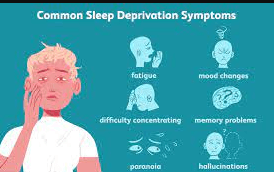Exploring Stem Cell Therapies as a Bridge to Better Health

A quickly developing field of medicine that has the potential to revolutionize healthcare is stem cell treatment. Stem cell therapies provide promising treatments for a range of illnesses by using the body’s cells to restore and repair damaged tissues. Gaining knowledge about these medicines’ mechanisms of action and possible uses can help predict their future in medicine.
1. Understanding Stem Cells
Because stem cells are unique and extraordinary cells that can develop into multiple cell types, the body employs them for growth, repair, and regeneration. The two primary types of stem cells are those categorized as adult or embryonic stem cells. Early-stage embryos give rise to embryonic stem cells, which are pluripotent and can develop into any kind of cell in the body. On the other hand, adult stem cells are highly specialized and often develop into a limited range of cell types relevant to their original tissue because they are multipotent. These stem cells are seen in fat and bone marrow, among other organs. When it comes to treating a wide range of illnesses and injuries, from degenerative problems to acute tissue damage, stem cells’ adaptability, and regenerative powers show great promise for improving medical treatments and therapies.
2. Regenerative Medicine Applications
The foundation of the cutting-edge discipline of regenerative medicine, which aims to replace or repair damaged tissues and organs, is stem cell therapy. The ability of stem cells to rebuild healthy cells and tissues makes them extremely useful in the treatment of many diseases. Stem cell therapy, for instance, is used to treat spinal cord damage. Movement and function may return as a result of this medication, which promotes nerve cell regeneration. Moreover, in heart disease cases, stem cells may be able to repair damaged heart tissue, improving cardiac function and patient outcomes. These therapies give patients with severe or persistent illnesses greater hope by utilizing the body’s healing ability to restore normal function in affected areas.
3. Advances in the Treatment of Neurological Disorders
Neurological disorders such as multiple sclerosis, Parkinson’s disease, and Alzheimer’s disease pose significant challenges due to the intricate nature of the nervous system. Stem cell therapies may provide exciting new therapy options by promoting the brain’s natural healing processes and possibly replacing damaged neurons, according to recent studies. It may be possible to grow stem cells into dopamine-producing neurons to help balance out neurotransmitters and alleviate symptoms of Parkinson’s disease. With stem cells, Alzheimer’s patients may be able to delay the development of cognitive loss by repairing damaged neurons and synapses. Advances in stem cell research are providing hope where traditional treatments have failed by opening the door to novel therapies that could dramatically improve the quality of life for patients with these crippling neurological disorders.
4. Innovative Approaches to Chronic Diseases
The potential of stem cell therapy is being demonstrated by the innovative methods in which it is being employed to treat a variety of chronic conditions. One such application that targets the inflammation and brain damage caused by the condition is stem cell treatment for lyme disease. The goal of stem cell therapy is to lessen symptoms and enhance the quality of life for patients by repairing damaged tissue and regulating immune responses.
Similarly, stem cells can promote tissue regeneration and reduce inflammation in joints affected by chronic conditions such as rheumatoid arthritis. The purpose of research on stem cells as a possible diabetes cure is to regenerate cells that make insulin. These developments show how adaptable and promising stem cell treatment is for treating complicated, multidimensional illnesses that have hitherto proven difficult to treat successfully.
5. Potential and Limitations
While stem cell therapy holds great promise, many limitations and problems still need to be addressed. Particularly, worries over embryonic stem cells have sparked a great deal of ethical debate. Moreover, investigations on the long-term effects and safety of stem cell treatments are still ongoing. To ensure that medications are both safe and effective, researchers are putting a lot of effort into overcoming these obstacles. As the field advances, other potential applications could include enhancing the efficacy of other state-of-the-art treatments, such as injections for weight loss. In order to fully employ stem cells as a therapeutic tool and pave the way for innovative therapies and improved patient outcomes, the medical community aims to overcome these challenges.
Conclusion
Stem cell therapy has great promise for the advancement of medicine, as it can offer innovative remedies for an extensive variety of illnesses. By being aware of their uses and capacities, you can see how revolutionary stem cells could be for the medical industry. As research advances, these medicines may become more accessible, providing new hope to patients worldwide.





